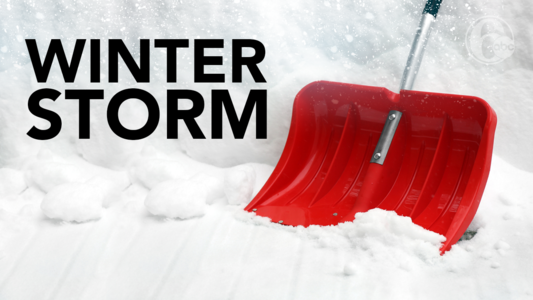
Potential exists for frostbite, hypothermia as dangerous temperatures set in this weekend
SPRINGFIELD, IL — Governor JB Pritzker has directed state public safety agencies to work with state agencies and local jurisdictions to ensure the appropriate resources are available as artic cold temperatures and snow takes aim on our state.
These forecasted temperatures have the potential to be the coldest conditions we have experienced since the polar vortex that occurred in January 2019. Current forecast models indicate arctic air will move into Illinois today and will last through Monday. The National Weather Service indicates wind chills could reach -25 in northern Illinois, -20 in central Illinois, and single digits in southern Illinois.
With these extreme temperatures and dangerous wind chills, the Illinois Department of Public Health (IDPH) warns that frostbite could set in on exposed skin in as little as 15 minutes. With that in mind, state public safety agencies want to remind residents to limit unnecessary travel during this period. If you must travel, call ahead of time to ensure that normal operating hours are still in place. This is particularly true for those venturing out for COVID-19 vaccination appointments at drive-thru clinics or seeking COVID testing at outdoor testing sites.
“There are dangerous health conditions that can occur specifically in severe winter weather,” said Illinois Department of Public Health Director Dr. Ngozi Ezike. “It’s important to watch for signs of extreme cold. Knowing the warning signs of dangerously cold weather and the health conditions they can cause can help you stay safe and healthy.”
IDPH reminds people of the health dangers of extreme low temperatures and tips on how to stay warm.
Frostbite
Parts of the body most commonly affected by frostbite due to exposed skin include the face, ears, hands, and feet. Frostbitten skin is whitish and stiff, and the area will feel numb rather than painful. To treat frostbite, warm the affected part of the body gradually. Wrap the frostbitten area in blankets, sweaters, coats, etc. and seek medical attention immediately. Do not rub frostbitten areas because the friction can damage the tissue.
Hypothermia
Hypothermia is caused by a drop in body temperature to 95 degrees Fahrenheit (F) or less and can be fatal if not detected promptly and treated properly. Infants and the elderly are particularly at risk of hypothermia. Signs of hypothermia include:
· Shivering
· Exhaustion
· Confusion
· Drowsiness
· Slurred speech
· Weak pulse
· Slow heartbeat
· Infants may experience bright red, cold skin.
Do not try to treat hypothermia at home. The condition should be treated in a hospital.
Dressing for the cold
If you need to be outside, the following suggestions will help keep you warm and protect your body from excessive heat loss.
· Wear several layers of lightweight clothing rather than one or two layers of heavy garments. The air between the layers of clothing acts as insulation to keep you warmer.
· Cover your head. You lose as much as 50 percent of your body heat through your head.
· Wear mittens rather than fingered gloves.
· Wear warm leg coverings and heavy socks or two pairs of lightweight socks.
· Wear waterproof boots or sturdy shoes that give you maximum traction.
· Cover your ears and the lower part of your face. The ears, nose, chin, and forehead are most susceptible to frostbite. Cover your mouth with a scarf to protect the lungs from directly inhaling extremely cold air.
Traveling in the Cold
Public safety officials are reminding the public to always reconsider travel plans during inclement weather and ask if your trip is necessary or if it can wait. If you must travel, the possibility of scattered slick spots increases considerably during subzero temperatures, especially overnight and on ramps, overpasses, bridges and shaded areas. High winds can decrease visibility may be reduced in rural and open areas.
“The team at IDOT will be monitoring the roads, treating them as necessary, and assisting motorists as needed,” said Acting Illinois Department of Transportation Secretary Omer Osman. “Please make sure to have the necessary supplies and equipment in your vehicle should you encounter problems, and do not leave your vehicle in the event of a breakdown. Call for help and wait for assistance to arrive.”
If you must travel, please remember to share the road. Illinois law requires drivers to change lanes when approaching police, first responders and broken-down vehicles. Also, slow down when approaching snow plows and maintenance vehicles, providing them plenty of room to operate.
Current road conditions are available 24/7 at www.GettingAroundIllinois.com. Before you leave your home, make sure your vehicle is equipped with an emergency kit. “Preparing well in advance of winter weather is really the best way to cope with dangerous winter weather,” said Alicia Tate-Nadeau, IEMA Director. “Now is the time to prepare your vehicle and house for winter conditions. Make sure you have blankets, non-perishable food, boots, extra clothing and other items in your car in case you are stranded or waiting for a tow. At home, make sure you have enough essential items to ride out a storm or should you lose power.”
Home Heating Tips
Proper home heating is a critical issue during the winter months, and over time has proven deadly for many families. Every year, more than 400 people die in the U.S. from accidental carbon monoxide (CO) poisoning. CO is found in fumes produced any time you burn fuel in cars or trucks, small engines, stoves, lanterns, grills, fireplaces, gas ranges, or furnaces. CO can build up indoors and poison people and animals who breathe it.
• Never use a generator inside your home, basement or garage.
• Do not use a stove or oven as a home heating sources
• If using a space heater, keep it at least three feet away from flammable items such as curtains, blankets and sofas.
• Know the signs for carbon monoxide poisoning: headache, dizziness, weakness, upset stomach, vomiting, chest pain and confusion.
Neighbors Helping Neighbors
Over the course of the next few days, Governor Pritzker encourages people in affected areas to check on elderly neighbors who may be in need of assistance. Statistics show 46-percent of individuals expect to rely on the people in their neighborhood for assistance within the first 72 hours after an emergency or disaster. “We need to reach out to our friends and neighbors. If you know of someone who needs help, please contact your local law enforcement officials.”
You can stay ahead of incoming winter weather by following the National Weather Service in your area:
More tips for staying safe at home and on the road are available in a Winter Weather Preparedness guide developed by IEMA and the National Weather Service. This guide is available, in digital form, on the Ready Illinois website at www.Ready.Illinois.gov.













